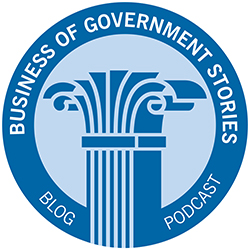
The Government’s Program Management Story: Taking a Cue from The Big Screen

The US government provides critically needed services through programs in each agency across the nation each day, to a scale of millions of people. Families receive social security checks, students receive support to attend college, small businesses receive loans – the list goes on and on. At the same time, the very scale of government services means that a problem in program delivery impacts a very significant portion and geographic scope of the nation. And such problems echo as advocacy groups, oversight bodies, and media raise legitimate questions about what went wrong, even given the context of so much that goes right in government.
Early Focus
Longstanding program management concerns have been reflected throughout the existence of the Government Accountability Office’s (GAO) High Risk List, an issue raised by Don Kettl (then with the University of Maryland, now with the LBJ School of Public Affairs at the University of Texas) in this IBM Center report. The Office of Management and Budget (OMB) addressed guidance on effective program management issues in early guidance for capital projects in the Capital Programming Guide, which continues to be informed by success on large programs at the Defense Department; and for IT projects in the Exhibit 300 – which was initially an effort to adapt commercial best practice in IT management to government rules. But despite these and similar efforts, substantial program management issues continued in large programs including the Coast Guard Deepwater, the Navy Marine Corps Internet, and modernization efforts for Federal retirees and at the Internal Revenue Service.
How does the Breakfast Club Factor into Program Management? - A Brief Overview with Dan Chenok
Against this backdrop, a group of current and former government leaders began to meet informally around 2005 at the Council for Excellence in Government (which has since closed) to develop principles and practices for agencies to build skills and capabilities for managing large programs. We talked over breakfast monthly, hence the moniker of “The Breakfast Club” – many contributed to this initiative, which was led by a core group that included Alan Balutis, Greg Giddens, Stan Soloway, Jim Williams, and myself. The group eventually published a report with key findings and recommendations, summarized in this 2017 article.
The Impact of HealthCare.Gov
As government continued to evolve its capacity to better manage programs over time, a turning point in the understanding of the importance of strong program management came with the troubled launch and recovery of the healthcare.gov website and systems in 2013. This event and its aftermath has been well-chronicled, with many findings that a key failure stemmed from poor program management for an initiative of this scale and visibility. Among the after-action reviews was a congressional hearing that included recommendations for improved program management, such as the “7S for Success” framework from the American Council for Technology and Industry Advisory Council (ACT-IAC) (and continuing the theme, the 7S framework was originally conceived of by a group of ACT-IAC government and industry leaders over breakfast at a Corner Bakery in downtown Washington!). And one of the enduring outcomes of the government’s historic effort to repair the website and program directly contributed to the establishment of the US Digital Service to help agencies succeed on large IT programs.
Congress Steps In
These activities raised congressional interest in how best to improve management of government programs, informed by studies from the Project Management Institute and the National Academy of Public Administration. After more hearings and discussion with Congress, a bipartisan group of congressional leaders introduced the Program Management Improvement and Accountability Act (PMIAA), signed into law in December 2016. This law enacted many recommendations and lessons learned from efforts like those described above:
- establishment of a Program Management Policy Council;
- standards and policies for agencies consistent with widely accepted standards for program and project management planning and delivery;
- engagement with the private sector to identify best practices in program and project management that would improve federal program and project management;
- portfolio reviews to address programs identified as high risk by GAO, including reviews of agency programs at least annually to assess the quality and effectiveness of program management; and
- Office of Personnel Management (OPM) regulations to: (1) identify key skills and competencies needed for an agency program and project manager, (2) establish a new job series or update and improve an existing job series for program and project management within an agency, and (3) establish a new career path for program and project managers.
OMB has since worked with agencies to implement this important statute, continuing to bring best practices to agency program management. More studies contributed to OMB’s understanding of how to frame its guidance on implementing the statute, including a further report from NAPA and an IBM Center report by Janet Weiss with the University of Michigan.
Lessons for Leaders Going Forward
The ACT-IAC report remains a solid framework of program management lessons learned for agencies, addressing such lessons in its “7S” approach, which advocates that a successful government program involves:
- Stakeholder Commitment and Collaborative Governance
- Skilled Program Manager and Team
- Systematic Program Reviews
- Shared Technology and Business Architecture
- Strategic, Modular, and Outcomes-Focused Acquisition Strategy
- Software Development that is Agile
- Security and Performance Testing Throughout
Lessons learned on a broader scale are laid out in the 2017 article cited above from the Breakfast Club, focusing on the need for leadership support of program managers, clarity of responsibilities and accountability for results, professional development and change management training for emerging PM leaders, and the importance of forums for sharing best practice like that authorized in the PMIAA. Whether through this framework or the many other efforts to help government program management improve, this issue will continue to resonate as a key element of government performance in the near and far future – which may involve more breakfasts to help address issues to come!




